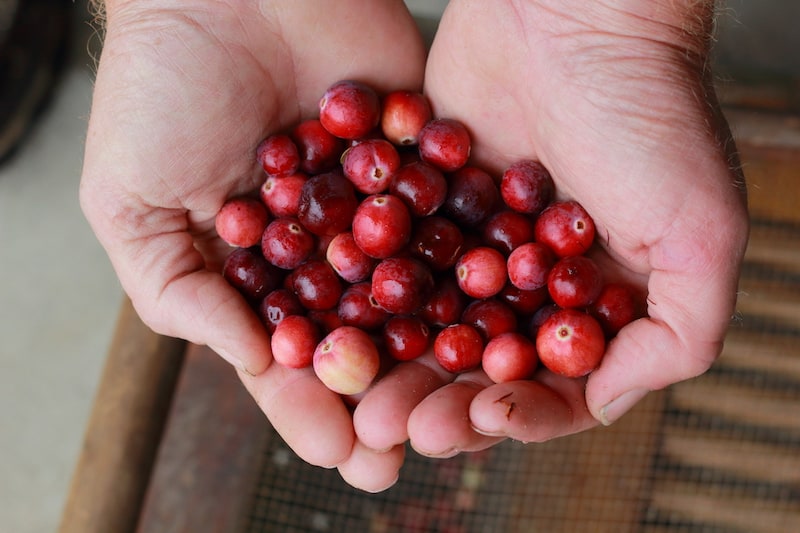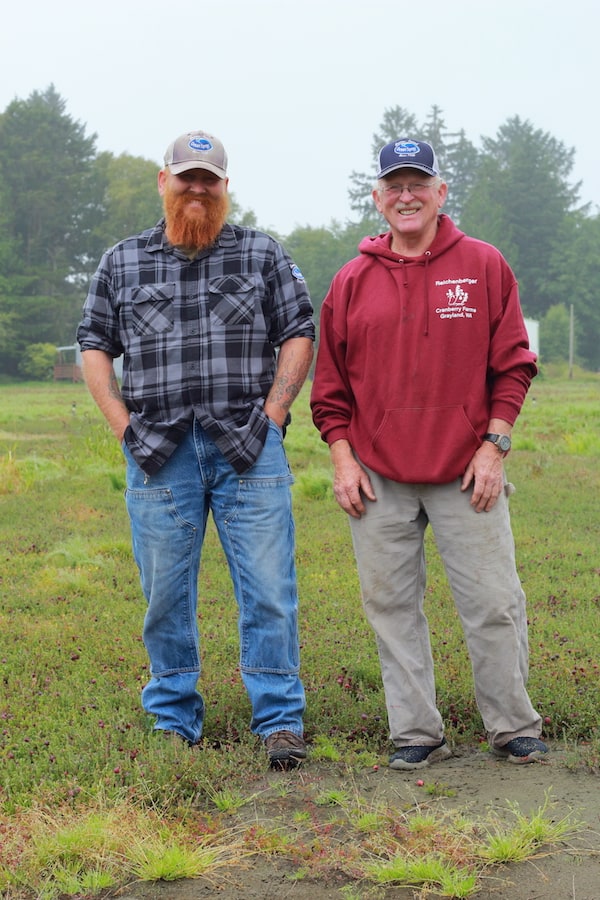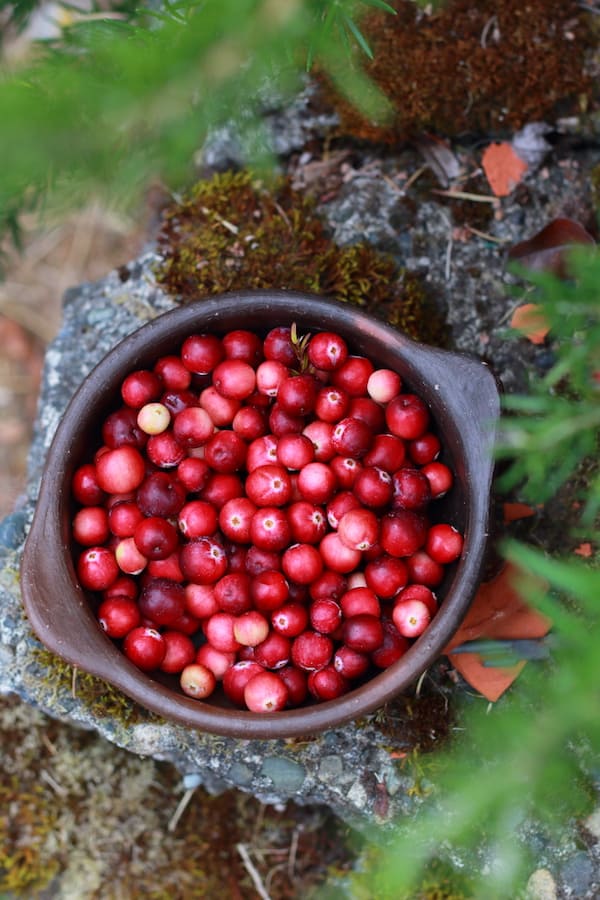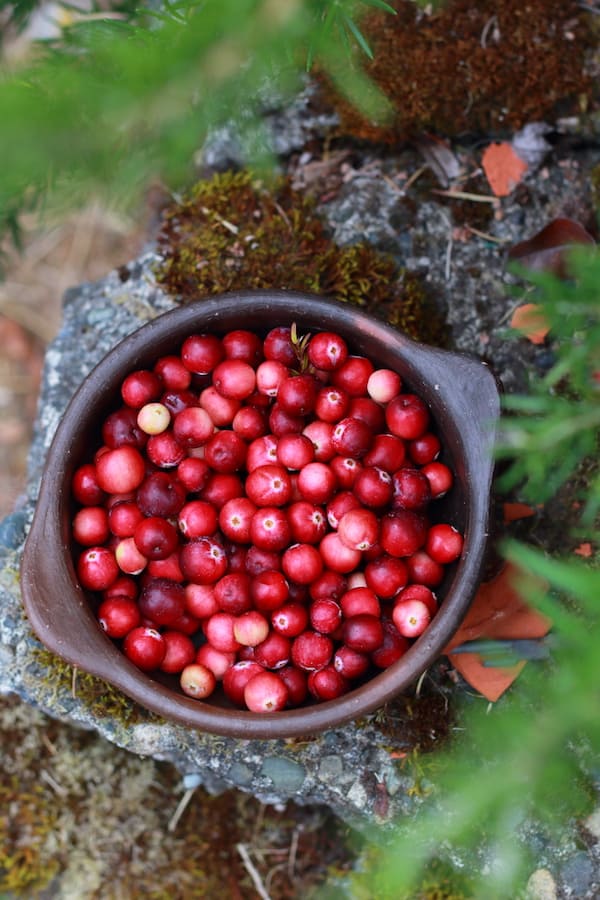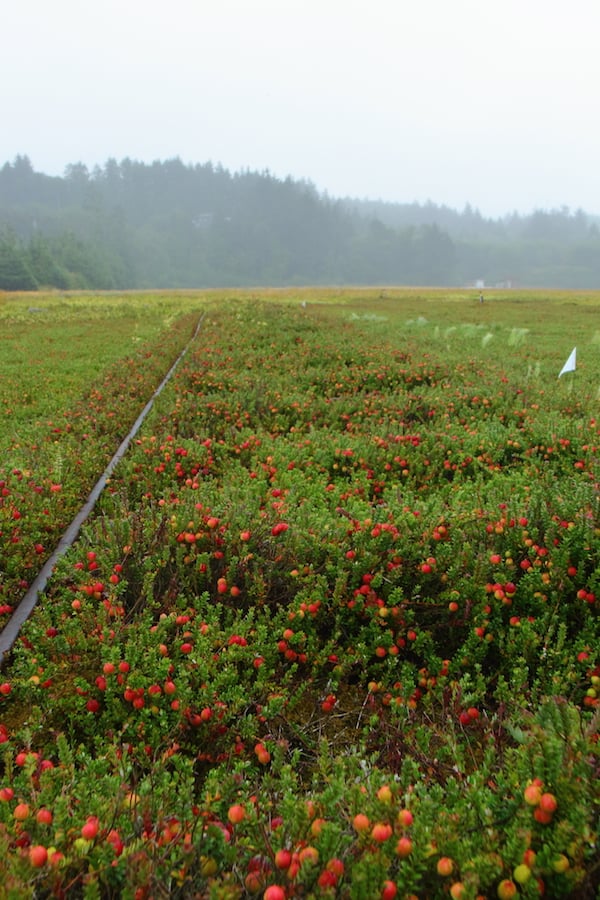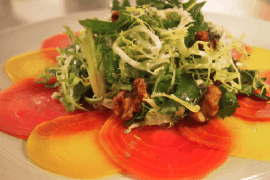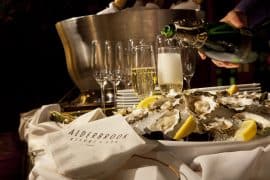Farm to Table Cranberries on the Coast
This holiday treat is also a Washington crop
written by Corinne Whiting photography by Gemina Garland-Lewis
For certain parts of Washington, this season has one (delicious) focus—cranberries. Take Grayland, a picturesque spot on the Pacific Coast where salty air meets marshy land. It’s situated about two-and-a-half hours southwest of Seattle. Each autumn, a weekend of food-focused festivities enlivens the Grayland Community Hall, appropriately located on Cranberry Road. The venue was built in 1939 by industrious Finns who populated and harvested the region. Through the Years About 235 cranberry growers currently work on the West Coast, from Oregon to British Columbia. Cranberry farming in the southwest corner of Washington has a 100-year-plus history, and the cranberry bogs remain a cherished asset of Grayland. Although the fruit has always existed here, it wasn’t until the late 1800s that it was cultivated as a crop. While exploring the coastal stretches of Southwest Washington, a visitor from Massachusetts, Anthony Chabot, discovered native cranberries growing in bogs and flooded fields that reminded him of Cape Cod.
Then, in 1912, Ed Benn planted Grayland’s first crop, convinced that the peat soil here could successfully cultivate commercial cranberries. Some of those vines still exist. Today, 99 percent of local growers are part of an Ocean Spray cooperative—a farmer-owned company of 700 families across North America. Grayland is also home to the famous Furford picker, a machine named after its inventor that harvests and prunes the cranberry crop. Leslie Eichner, executive director of the Westport Grayland Chamber of Commerce, explained that all but two farmers here use the labor-intensive dry-harvesting method, since they have no huge water source except for saltwater. On the other hand, cranberry farmers in Long Beach use water harvesting, thanks to their proximity to lakes. In Grayland, Wendy Hatton and her husband, Don, have been cranberry farming for more than thirty years. Their first harvest took place in 1972, and they have greatly expanded since then.
Both of their sons are now growers, too, and they own just over 50 acres. The oldest vines on their property date back to the 1930s. Hatton’s parents always farmed in some manner, so when they saw an ad in the Aberdeen paper for a home swap, they decided to move the family into a teeny cabin set in the midst of prime farmland. Although Hatton said the job’s “not for everybody,” she said she got into the cranberry business because “I had farming experience. I could do it. I liked it.” She said it requires an incredible amount of work, but noted, “If you’re able to do it yourself, you can make a good living.” Hatton explained that hundreds of cranberry varieties exist, and once planted, it takes about five years to get a crop. Despite all the rules and regulations, she appreciates that cranberry farming allows her family to work when they want. And although they haven’t gotten there quite yet, she and her husband remain hopeful that—one day—they’ll be able to take off several months each winter. Hatton said summer months can be nearly as critical as harvest, as this is the time when the crops need “babysitting” and regular watering sessions, just like any garden. This rings especially true for this past summer, she said, which proved particularly dry.
Festival Traditions Live On
This year, the annual Cranberry Harvest Festival takes place October 13-14, but folks can enjoy the tasty, antioxidant-rich “superfood” all season long. Eichner, once a grower herself, became the festival organizer in 2013. Although the anticipated event reaches its twenty-fifth year this fall, Eichner described it as a delightfully “homespun” production that hasn’t evolved much over time. The festival’s turnout depends on the forecast, since the second weekend in October sometimes brings bad weather like sideways rain blowing away the tents of hardy outdoor vendors. Thankfully, there’s plenty of indoor space, too. The festival occurs with cranberry harvest in full swing, meaning visitors get to drive through the bogs and watch the action up close. Guided bus tours allow visitors to talk to farmers, watch them harvest and stroll through their warehouses.
Other festival highlights include an eating contest for kids and adults, the 5K and 10K “Jog the Bog and Beach” and a competition to determine the biggest berry grown by local farmers. On Saturday evening at dusk, illuminated participants join the Firefly Parade. And of course, there’s the much- anticipated Cranberry Cook-off, with categories ranging from main courses and condiments to breads and desserts. “Some people absolutely won’t give over their recipes,” Eichner said, recalling a particularly delectable standout—cranberry clam fritters, served with a buttery sauce. “It’s the people coming in and being so interested in something specific to the region,” Eichner said of the festival. “It makes me happy.”


